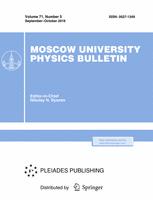In the oil and gas industry, carbon dioxide injection into the reservoir is considered a promising method for enhancing oil recovery: when dissolved in hydrocarbons, the viscosity of oil decreases and a swelling process occurs, which improves the efficiency of displacement. At certain values of pressure and temperature, a three-phase equilibrium can form in the system - two liquid phases (enriched in carbon dioxide and enriched in hydrocarbons) and a gas phase, which seriously complicates the use of classical iterative algorithms for calculating phase equilibria with stability tests. In this paper, the method of direct minimization of the Gibbs free energy at fixed values of pressure and temperature was used to determine the boundaries of the regions of two-phase and three-phase equilibrium; in addition, the viscosities of each phase were calculated using the Lorenz-Bray-Clark model, which made it possible to quantitatively estimate the decrease in the viscosity of the oil phase.
64.70.Fx Liquid-vapor transitions
$^1$MSU



